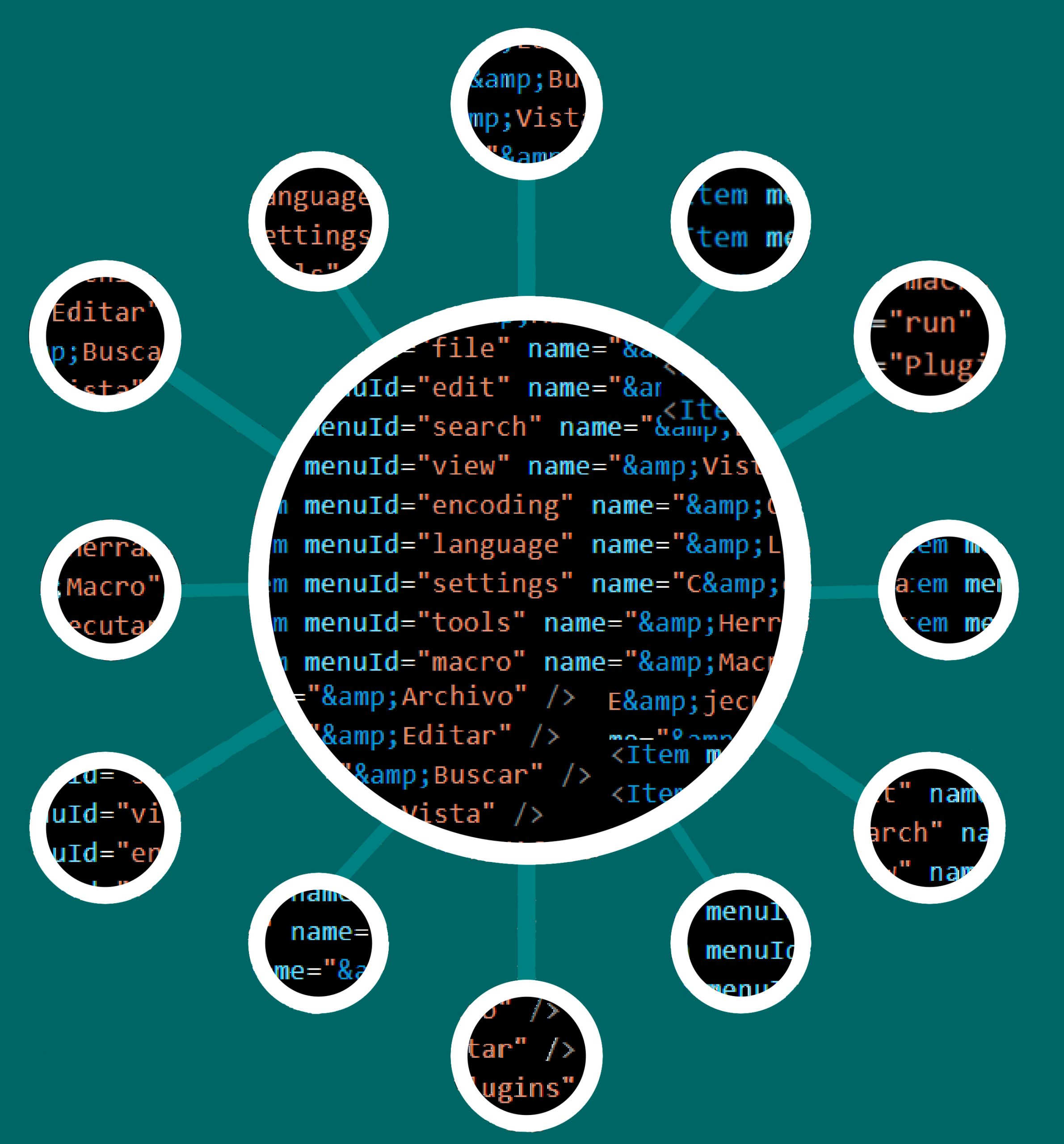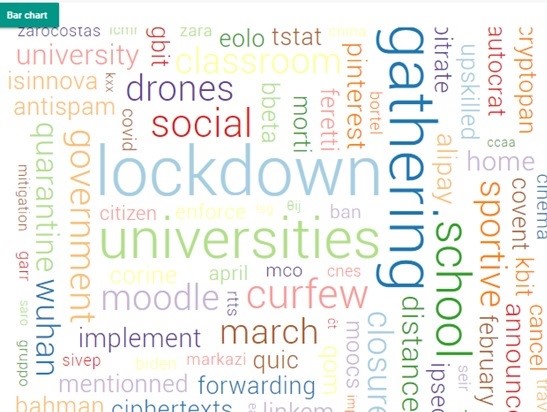The Covid situation has put new terms into our everyday vocabulary, terms such as pandemic or infodemic. This last one, according to Wiktionary can be defined as:
Blend of information + epidemic
Noun
infodemic (plural infodemics)
- (informal) An excessive amount of information concerning a problem such that the solution is made more difficult.
- (informal) A wide and rapid spread of misinformation.
One good way of surviving infodemia is analyzing data. AVOBMAT (Analysis and Visualization of Bibliographic Metadata and Texts-https://avobmat.hu/) is a text mining research tool that was primarily designed for digital humanities research. It is a powerful digital toolkit for analysing and visualizing bibliographic metadata and texts. AVOBMAT added a COVID-19 dataset to its new text mining research tool. This is a resource of over 138,000 scholarly articles (sadly, only in English), including over 69,000 with full text, regarding COVID-19, SARS-CoV-2, and related coronaviruses. We thought that before delving into the sea of Twitter to see what is happening in relation to the pandemia and Education (Higher Ed, Remote Teaching, etc.), we should build a framework that could support and inform our hypothesis. We used AVOBMAT to explore what scientific journals published between 2019 and 2020 regarding these topics.
First, we did a General Lucene query: we set up a period (2019 and 2020) and chose some general words such as “syllabus”, “education” and “Coronavirus” (not only COVID-19, but all the Coronavirus diseases). The search showed us 298 articles (of course, all of them in English): http://dighum.bibl.u-szeged.hu/avobmat-covid/home
Then, we chose to see what this general search could tell us in a closer approach, though still distant. We chose the WordCloud visualization option, and this was the result:
Something we generally expected, then had confirmed by the cloud, are the references to cities and countries (Wuhan, Hubei, China, Vellingiri) and references to specific months (December, February, March). As the situation in the US was not critical until April, we discovered the presence of the East. However, it is curious that other countries such as Italy, Spain, and the United Kingdom, all of which were in a concerning situation through early 2020, were missing. We could explain these results with an argument that there was a delayed response in academic writing and publishing in tackling this new context, and maybe also that there was not much interest in the topics we were looking at (syllabus, education, coronavirus). However, the explanation itself is in the coronavirus, specifically SARS-CoV (2002-2003) and MERS-CoV (2012-nowadays). All of the other coronaviruses mainly attacked countries from the East and not the West. This explains the appearance of some of the cities that we mentioned before. Actually, it wasn’t until March 2020 that some journals, such as Inside Higher Ed and The Chronicle of Higher Ed, started publishing articles that talked about Covid-19 and Higher Ed in the US. Earlier publications from 2020 or even January and February 2020 were talking about new challenges in Higher Ed in China, South Korea or Europe (Italy, Spain, UK) (See for instance the search we did for Inside Higher Ed journal).
All in all, it is really interesting that in this cloud education is related with medicine (healthcare, pharmacists, emergency, quarantine, transmission) and, obviously with face, mask…and Google. Of course, it is not only bodily medicine referred to here, but also terms such as psychiatrist, mental, etc.
Finally, if we do a very close reading and analyze the metadata given in the general search, we find that in most of the articles the term education is related to the variables that the researchers used to study the disease. For instance, this is a passage in “A County-level Dataset for Informing the United States’ Response to COVID-19” by Benjamin D. Killeen et al (2020), in which the authors state that they have used “300 variables that summarize population estimates, demographics, ethnicity, housing, education, employment and income, climate, transit scores, and healthcare system-related metrics.”(https://arxiv.org/pdf/2004.00756.pdf). In other cases, the term education is very much related to a Ministry (in the case of Iran, the work of the Ministry of Health and Medical Education is much cited (https://www.ncbi.nlm.nih.gov/pmc/articles/PMC7085938/).
Therefore, it’s not easy to understand what this cloud is telling us.
If we do a similar Lucene query but replacing Coronavirus with Covid-19, plus education and syllabus, we find 458 articles that show us these words:
Of course places (Hubei, Wuhan, China) and months (January, February, March) are still there. Terms related to mental illnesses are there (psychiatrist, mental), but quarantine now has a synonym which has been widely used in anglophone countries: lockdown. We also have words similar to Google (for example, Internet), and newcomers such as Whatsapp and others related to our new life, such as online, distance and telemedicine.
But what about education, as teaching and learning? We further detailed our search using terms such as teaching, universities, learning, students and COVID-19. As a result, we got 199 articles in which these were the most used words:
Gathering versus lockdown, moodle, moocs, distance, gym, gave us a very realistic picture of the education scenario these days. Even the metadata visualization tells us that these topics are approached from the Medical Sciences, and it gives us a detailed picture of our global COVID-19 situation.
As we suspected, most of the articles published about COVID-19 and the different approaches to topics related to education, Higher Education, etc. are related to studies in the Medical Sciences. On the one hand, as expected, this is a dominant discipline in a pandemic context, but it also shows how Medical Sciences have improved the slow timing of academic writing. Of course, we are not giving account of all the publications on this topics, as many harvesting services from other latitudes are not included as part of the AVOBMAT service. Nevertheless, it gives us the big picture to move in our next post to an approach of what the tweets are saying on these topics. More distant and close reading coming soon!
Marisol Fila and Gimena del Rio Riande

